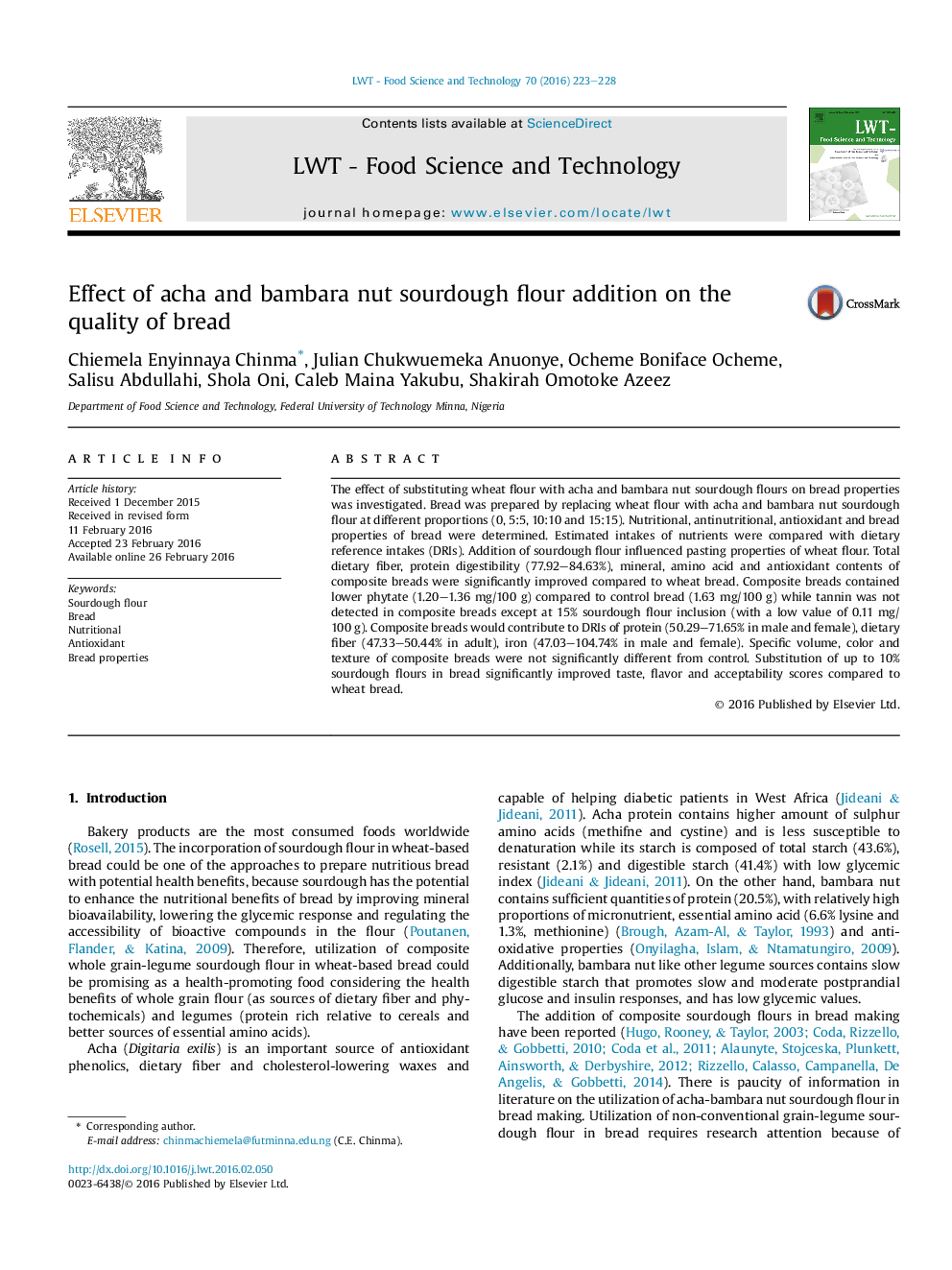| Article ID | Journal | Published Year | Pages | File Type |
|---|---|---|---|---|
| 4563589 | LWT - Food Science and Technology | 2016 | 6 Pages |
•Acha-bambara nut sourdough flour was used in bread making.•Addition of sourdough flour influenced pasting properties of wheat flour.•Addition of sourdough flour improved nutritional and antioxidant properties of bread.•Addition of sourdough flour led to changes in bread properties.
The effect of substituting wheat flour with acha and bambara nut sourdough flours on bread properties was investigated. Bread was prepared by replacing wheat flour with acha and bambara nut sourdough flour at different proportions (0, 5:5, 10:10 and 15:15). Nutritional, antinutritional, antioxidant and bread properties of bread were determined. Estimated intakes of nutrients were compared with dietary reference intakes (DRIs). Addition of sourdough flour influenced pasting properties of wheat flour. Total dietary fiber, protein digestibility (77.92–84.63%), mineral, amino acid and antioxidant contents of composite breads were significantly improved compared to wheat bread. Composite breads contained lower phytate (1.20–1.36 mg/100 g) compared to control bread (1.63 mg/100 g) while tannin was not detected in composite breads except at 15% sourdough flour inclusion (with a low value of 0.11 mg/100 g). Composite breads would contribute to DRIs of protein (50.29–71.65% in male and female), dietary fiber (47.33–50.44% in adult), iron (47.03–104.74% in male and female). Specific volume, color and texture of composite breads were not significantly different from control. Substitution of up to 10% sourdough flours in bread significantly improved taste, flavor and acceptability scores compared to wheat bread.
